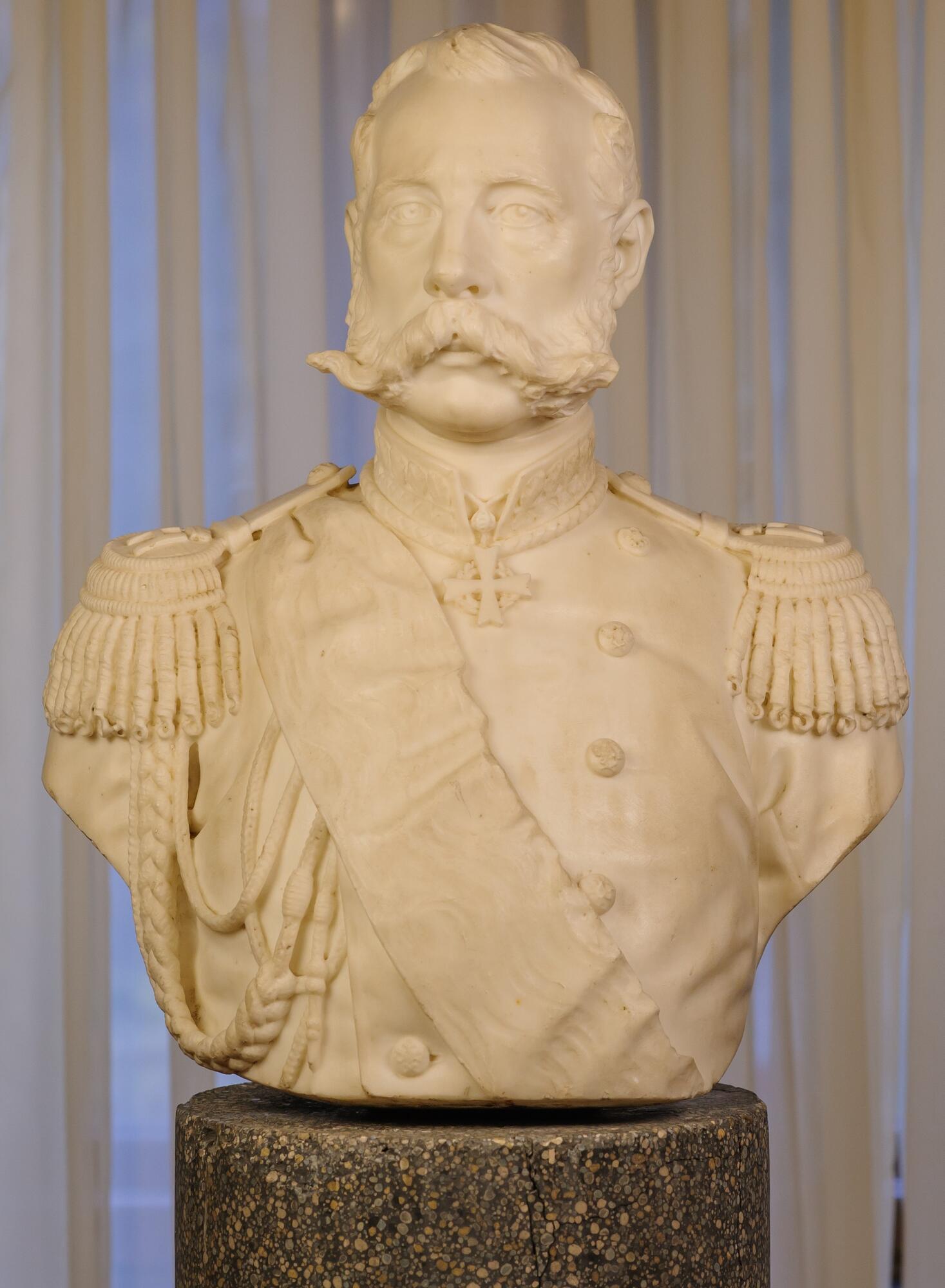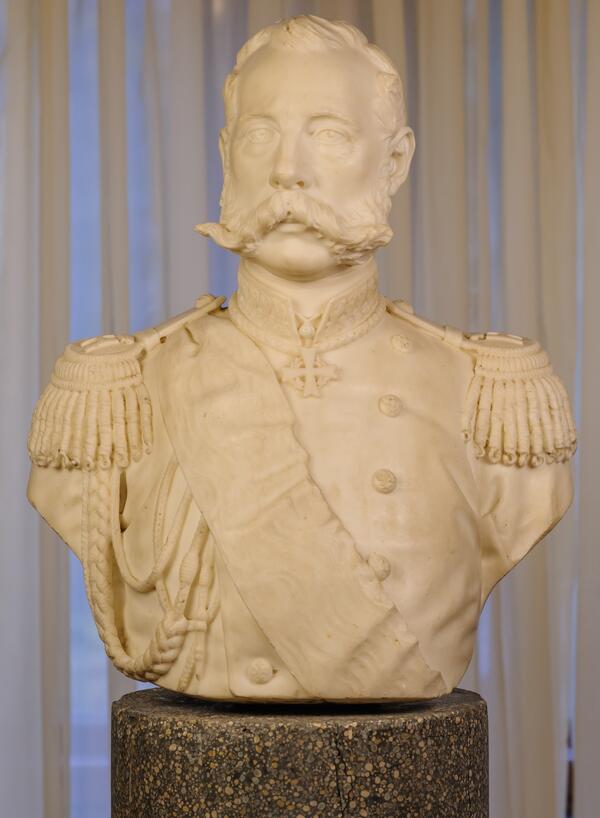A marble bust of Emperor Alexander II made by an unknown author is one of the most interesting exhibits in the Cabinet of His Imperial Majesty. It has been part of the permanent exhibition in Massandra Palace since the museum was established in 1992.
Emperor Alexander II (1818-1881) was known as the Liberator as he was the one to finally free the serfs. He is also responsible for a number of reforms in government, education, justice and warfare. In 1871 Russia denounced the demilitarization of the Black Sea and re-established a fleet there, restoring its rights. Alexander II, like Catherine the Great before him, once again started pursuing further expansion the Russian Empire. During his reign, Russia conquered Turkestan, North Caucasus, Far East, Bessarabia, and Batumi. The first years of Alexander’s reign were marked by victories in the Caucasian War.
Alexander II first visited the Crimea in 1837, when he was still an heir to the throne. Later, in 1861, he purchased the Livadia estate for his wife, Empress Maria Alexandrovna: the air of the Crimea was thought to have a salubrious effect on her tuberculosis. Ippolito Monighetti (1819-1879) was the architect who was charged with designing a new summer residence there. Before the Revolution of 1917, all the travel guides mentioned that the Imperial Family retreats to Livadia were one of the main incentives that helped develop Yalta as a popular sea resort.
Alexander II’s family usually spent up to several months in Livadia. As Princess Gorchakova wrote in her memoirs, ‘Year 1861 was a moment of revival for Yalta, it was the year in which the Imperial Family started visiting Livadia, spending a few months nearby; since then, each year Yalta grew more lively and more beautiful, as brightly colored dachas and comfortable, luxurious villas kept popping up, covered in green ivy or trellis roses; as hotels and inns opened hundreds of rooms inside their enormous buildings; as expensive stores embellished the embankment and other streets.’
The Emperor loved the Crimean Southern Coast and cared about Yalta’s development: in 1872 he instructed to provide an additional 400 hectares of land for the city’s expansion. He also adopted the new city plan with an explanatory note that specifically underlined the necessity to develop Yalta as a resort with a vast amount of gardens and green spaces. While signing this plan, Alexander II added a note to it: ‘It must be seen to that all the new buildings in Yalta be constructed with pleasant facades and goodly plans.’
Emperor Alexander II (1818-1881) was known as the Liberator as he was the one to finally free the serfs. He is also responsible for a number of reforms in government, education, justice and warfare. In 1871 Russia denounced the demilitarization of the Black Sea and re-established a fleet there, restoring its rights. Alexander II, like Catherine the Great before him, once again started pursuing further expansion the Russian Empire. During his reign, Russia conquered Turkestan, North Caucasus, Far East, Bessarabia, and Batumi. The first years of Alexander’s reign were marked by victories in the Caucasian War.
Alexander II first visited the Crimea in 1837, when he was still an heir to the throne. Later, in 1861, he purchased the Livadia estate for his wife, Empress Maria Alexandrovna: the air of the Crimea was thought to have a salubrious effect on her tuberculosis. Ippolito Monighetti (1819-1879) was the architect who was charged with designing a new summer residence there. Before the Revolution of 1917, all the travel guides mentioned that the Imperial Family retreats to Livadia were one of the main incentives that helped develop Yalta as a popular sea resort.
Alexander II’s family usually spent up to several months in Livadia. As Princess Gorchakova wrote in her memoirs, ‘Year 1861 was a moment of revival for Yalta, it was the year in which the Imperial Family started visiting Livadia, spending a few months nearby; since then, each year Yalta grew more lively and more beautiful, as brightly colored dachas and comfortable, luxurious villas kept popping up, covered in green ivy or trellis roses; as hotels and inns opened hundreds of rooms inside their enormous buildings; as expensive stores embellished the embankment and other streets.’
The Emperor loved the Crimean Southern Coast and cared about Yalta’s development: in 1872 he instructed to provide an additional 400 hectares of land for the city’s expansion. He also adopted the new city plan with an explanatory note that specifically underlined the necessity to develop Yalta as a resort with a vast amount of gardens and green spaces. While signing this plan, Alexander II added a note to it: ‘It must be seen to that all the new buildings in Yalta be constructed with pleasant facades and goodly plans.’



